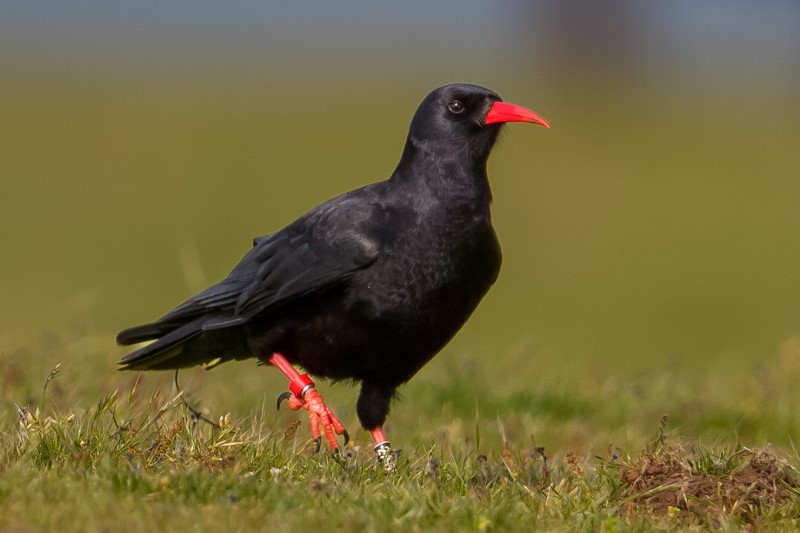Land Management for Red Billed Choughs
29 August 2023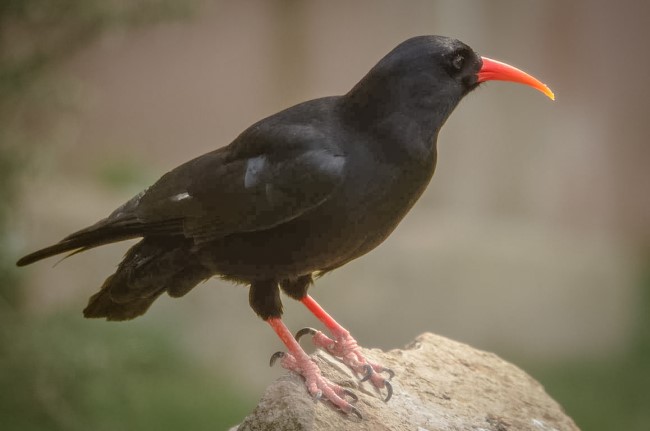
What are Choughs?
The red billed chough (Pyrrhocorax pyrrhocorax) is a member of the crow family found in rocky places, particularly sea cliffs along the West Coast. They are shiny black with a downward curved red beak, bright red legs, a loud ringing call and an acrobatic flight. They nest in caves on cliff faces, ruined buildings and occasionally agricultural sheds. They feed usually in flocks on short grazed grassland along cliff tops, they feed on invertebrates mostly hunting for them in cow pats.
Why Are They Special?
Choughs distribution is limited to areas with mild winters, suitable nest cavities and grazed coastal grassland. They are found along the West coast of Ireland and on the West coast of Scotland particularly Islay, Jura and Colonsay. They are heavily reliant on agricultural practices particularly outwintering of cattle.
The rarest member of the crow family, the red-billed chough is in steep decline in the UK, with an estimated population of fewer than 335 pairs UK wide (BTO 2014-2015), in Scotland there are only around 60 pairs with 40 of these being on Islay. The main cause of decline seems to be changes in agricultural practice particularly livestock grazing changes.
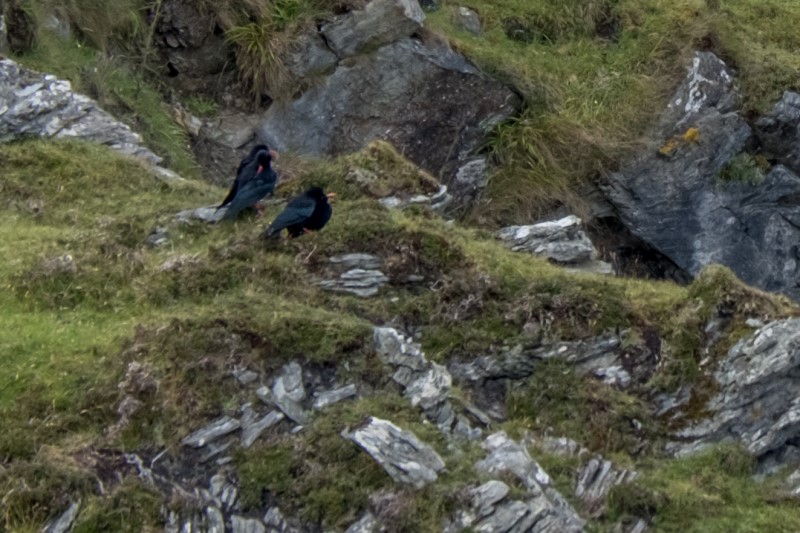
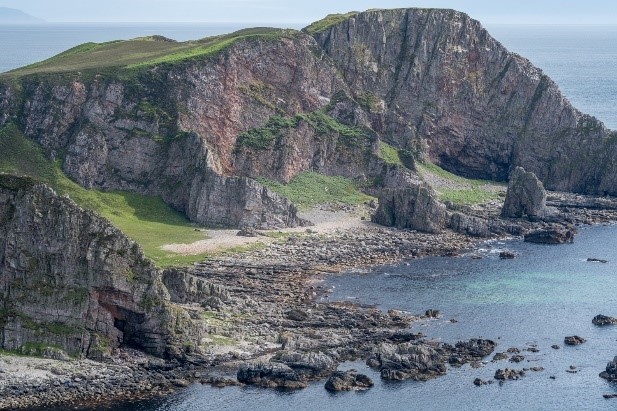
Choughs are afforded the highest degree of legal protection under Schedule 1 of the Wildlife and Countryside Act 1981. It is a Biodiversity Action Plan Species
Threats to Scotland's Choughs
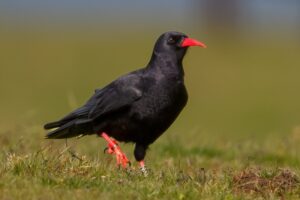
Grazing: Loss of extensive grazing through either intensification or abandonment. The birds require short turf grassland on which to feed on insects, particularly dung beetles found in cow pats. The lack of outwintered cattle may cause a loss of winter food source. This seems to be the main cause of decline.
Cattle medications: Anti-parasitic drugs administered to cattle. These pass through the digestive system of the cow and remain in the cow pat causing lack of invertebrates, a significant food supply for the Chough. Caution should be exercised when using these drugs particularly Ivermectin.
Fragmentation: The Chough population has declined so much that now inbreeding may be occurring in the small numbers that remain, causing genetic abnormalities.
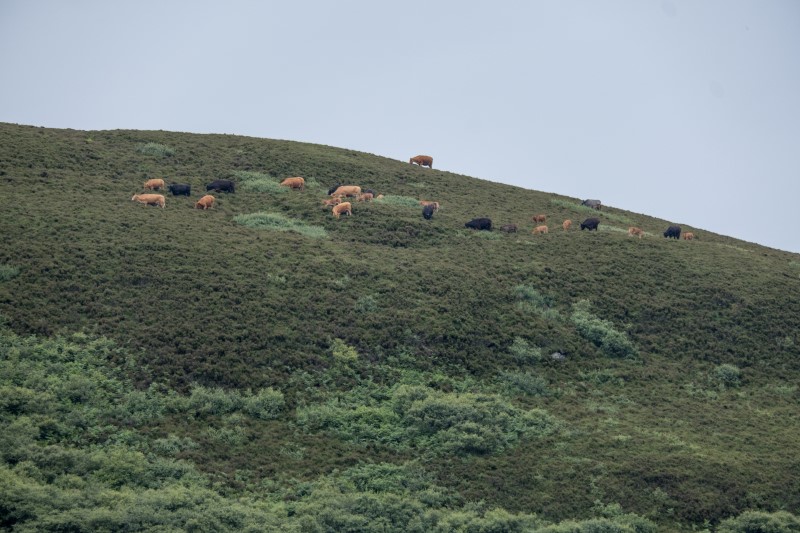
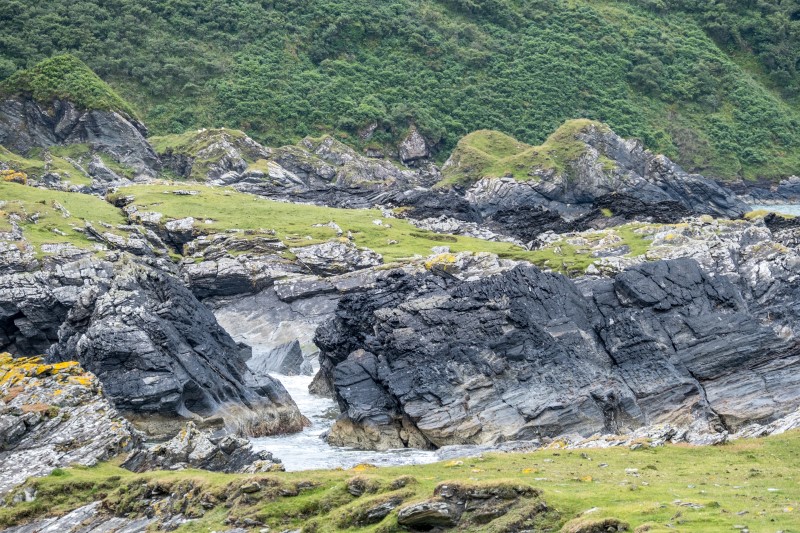
Habitat Management
Choughs require cattle grazing all year round. If you manage ground on the coast with potential for Choughs think of the value that having out wintered cattle could provide. It is important to have a food source which is suitable. Grazing by sheep or goats around the cliff edges can provide suitable habitat along with the insects that cattle encourage.
Consider your use of anti parasite drugs in cattle and only use on a necessary basis.
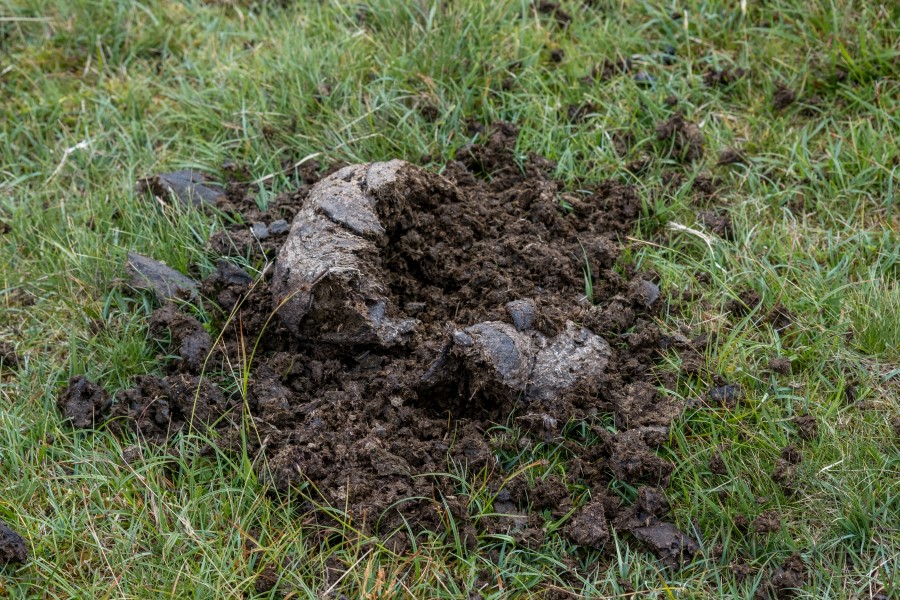
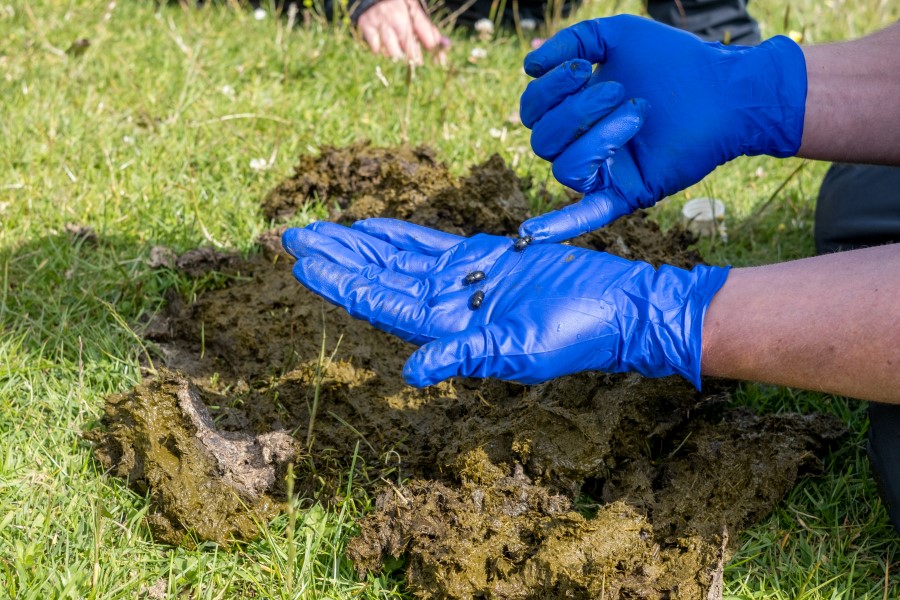
3 Ways to Protect Choughs on your Land
- Continue to graze the coastal cliff habitat.
- Have cattle outwintered where possible.
- Avoid anti parasite drugs unless necessary.
Helen Bibby, SAC Consulting
Sign up to the FAS newsletter
Receive updates on news, events and publications from Scotland’s Farm Advisory Service

